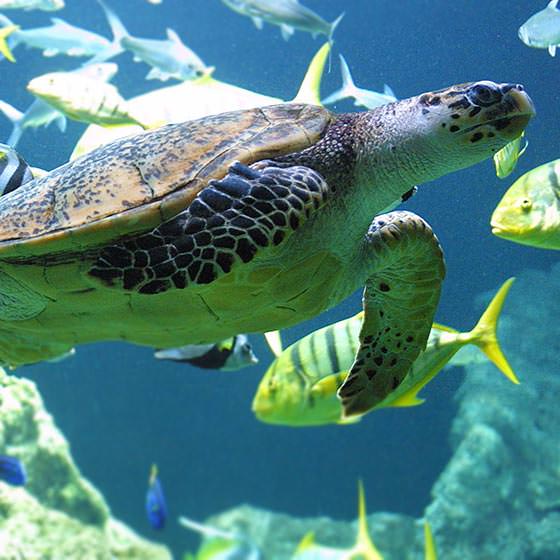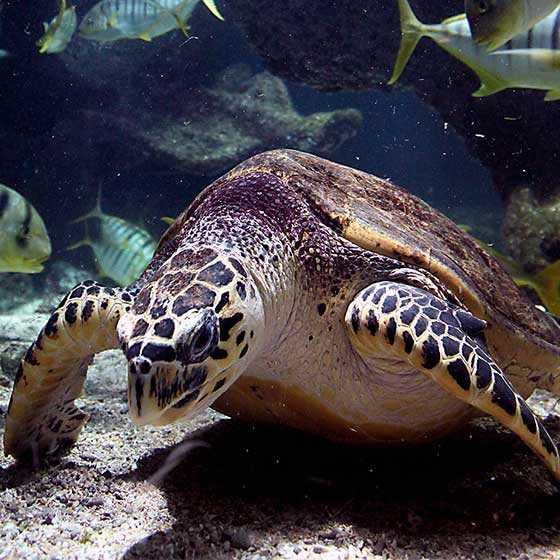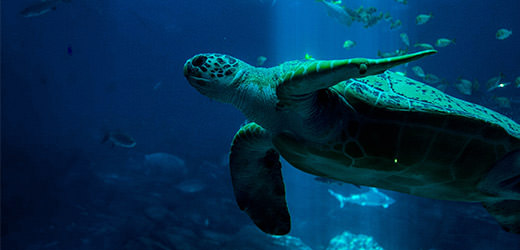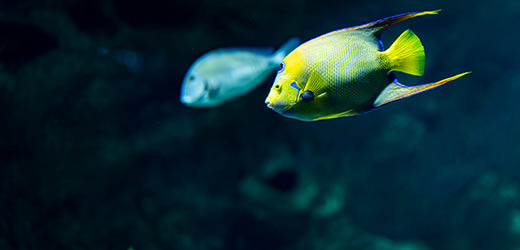Reproduction
As a general rule, hawksbill turtles only reproduce every two or three years. They mate in shallow waters.
A single mating is enough to fertilize all the eggs that will be laid during the season. This is because the females store up the spermatozoa for later ovulations. After mating, the females travel to remote beaches in tropical regions. They each dig a large bowl in the sand with their front flippers and then use their rear flippers to dig a nest 50 cm deep where they place their 70 to 200 eggs the size of table tennis balls. After laying their eggs, which can take up to 90 minutes, the females cover up their nests and return to the sea.




